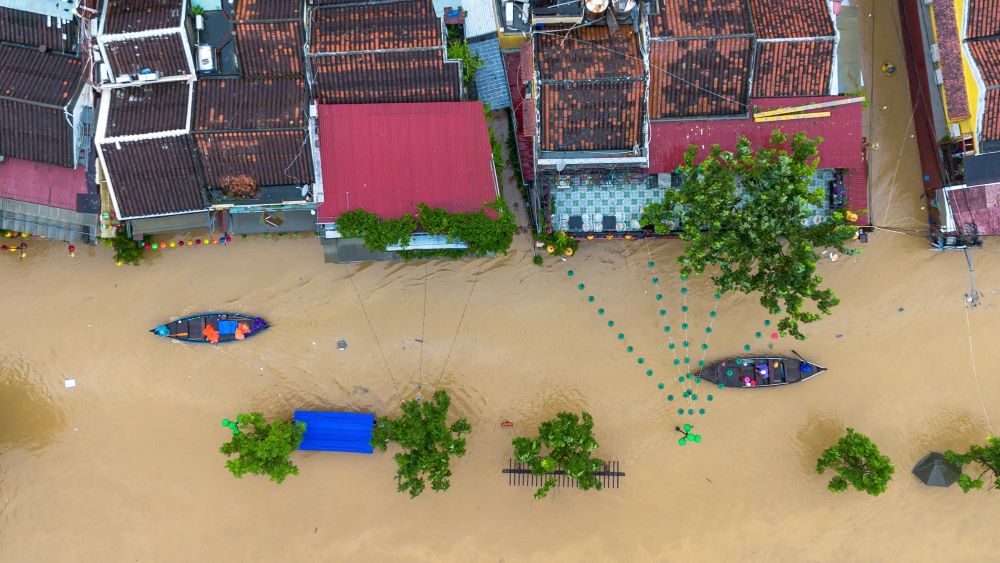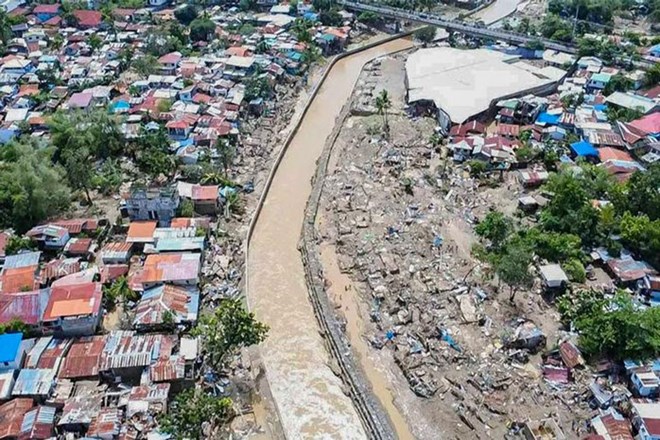Southeast Asia is experiencing a rare year of harsh climate, as many countries in the region are simultaneously facing prolonged flooding, severe droughts and super typhoons appearing with high frequency.
This situation comes as the COP30 climate conference in Brazil lacks high-level representatives from major emission powers, showing a gap between practical impacts and global commitments.
In Thailand, people in Bang Ban, Ayutthaya province have had to live with floods for the past 4 months. Rising water paralyzed traffic, the elderly had to move on rafts, and schools had to close for many consecutive weeks. The deep flooding of the fields caused rice to rot, and the harvest crop was poor.
Local people are concerned that the disaster is not over yet, because when the water recedes, the dry season often leads to severe droughts, continuing to destroy what is left. The "long-term crop - dry season" cycle becomes a tired spiral in which thousands of households are forced to live together.
In Vietnam, the effects are equally obvious. Hoi An - a heritage city located along the Thu Bon River - has just experienced many major floods in the past month. Shops and coffee shops have to clean up the thick layer of mud that sticks to walls, floors and furniture every day.

A restaurant owner here shared that the weather is getting more and more unpredictable, and just one erratic flood season is enough to put a small business in danger of closing.
According to the latest warning from the Asian Development Bank (ADB), economic losses caused by climate change could cause Southeast Asia to lose up to 17% of GDP by 2070 if action is not taken soon.
The Philippines - one of the world's most severely disaster-prone countries - is experiencing a particularly serious level of devastation this year. Super typhoon Fung-wong (Uwan) has just forced 1.4 million people to evacuate, just days after typhoon Kalmaegi swept through and caused great damage, killing hundreds of people.

So far, the Philippines has seen 21 tropical cyclones - a number that has exceeded the average for many years. Scientists said the "storm overlapping" caused increased damage, because the ground was saturated with water and the infrastructure system was weakened by previous storms. Meanwhile, rising ocean temperatures are fueling storms, making them stronger, although they do not necessarily appear more frequently.
While Southeast Asia struggled to withstand, negotiations continued in the context of a lack of leadership from major emission powers at COP30.
If COP30 does not promote reliable action, the 1.5°C target will be a symbol, says Dr Renard Siew, a climate expert from Malaysia.
For people in Bang Ban, Hoi An or the Philippines, the whirlwinds of floods, droughts and super typhoons are not warnings - but the reality they have to live with every day.











